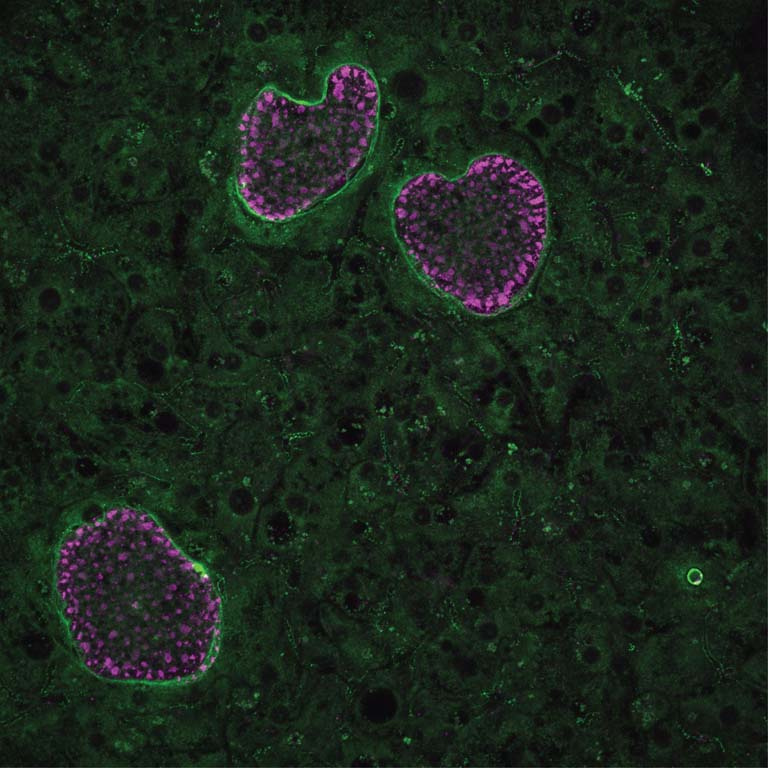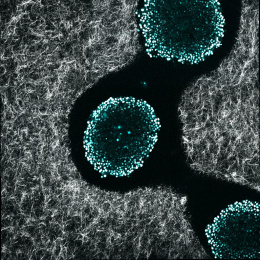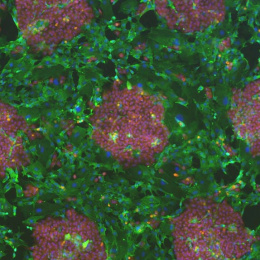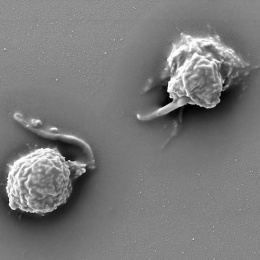Dormant Hypnozoite Studied in in vivo Culture
Dormant Hypnozoite Studied in in vivo Culture
Nil Gural, Jiang He, Sangeeta Bhatia
Koch Institute at MIT, Institute of Medical Engineering and Science
Malaria is generally known as a blood disease, however upon bite of an infected mosquito, the parasite first travels to the human liver where it incubates and grows for 10-14 days. Symptoms of the disease only manifest themselves after this obligate incubation period when the parasites break out of the liver and infect red blood cells. The strain of malaria studied here, Plasmodium vivax is unique in that a subset of the parasites that infect the liver will stay dormant for weeks to months to years after the initial infection. These forms, called hypnozoites, can reactivate due to yet unidentified cues, replicate for 10-14 days and re-initiate symptomatic disease. Thus Plasmodium vivax can induce recurrent disease and thus is a huge burden on malaria eradication efforts.
These images show multiple large liver stage malaria parasites, inside primary human hepatocytes. These large parasites are close to breaking out of the liver. In the bottom right corner of the image, a small circular parasite can be observed. This is the dormant hypnozoite. In green is the membrane of the parasite and in magenta is the endoplasmic reticulum of the parasite.






